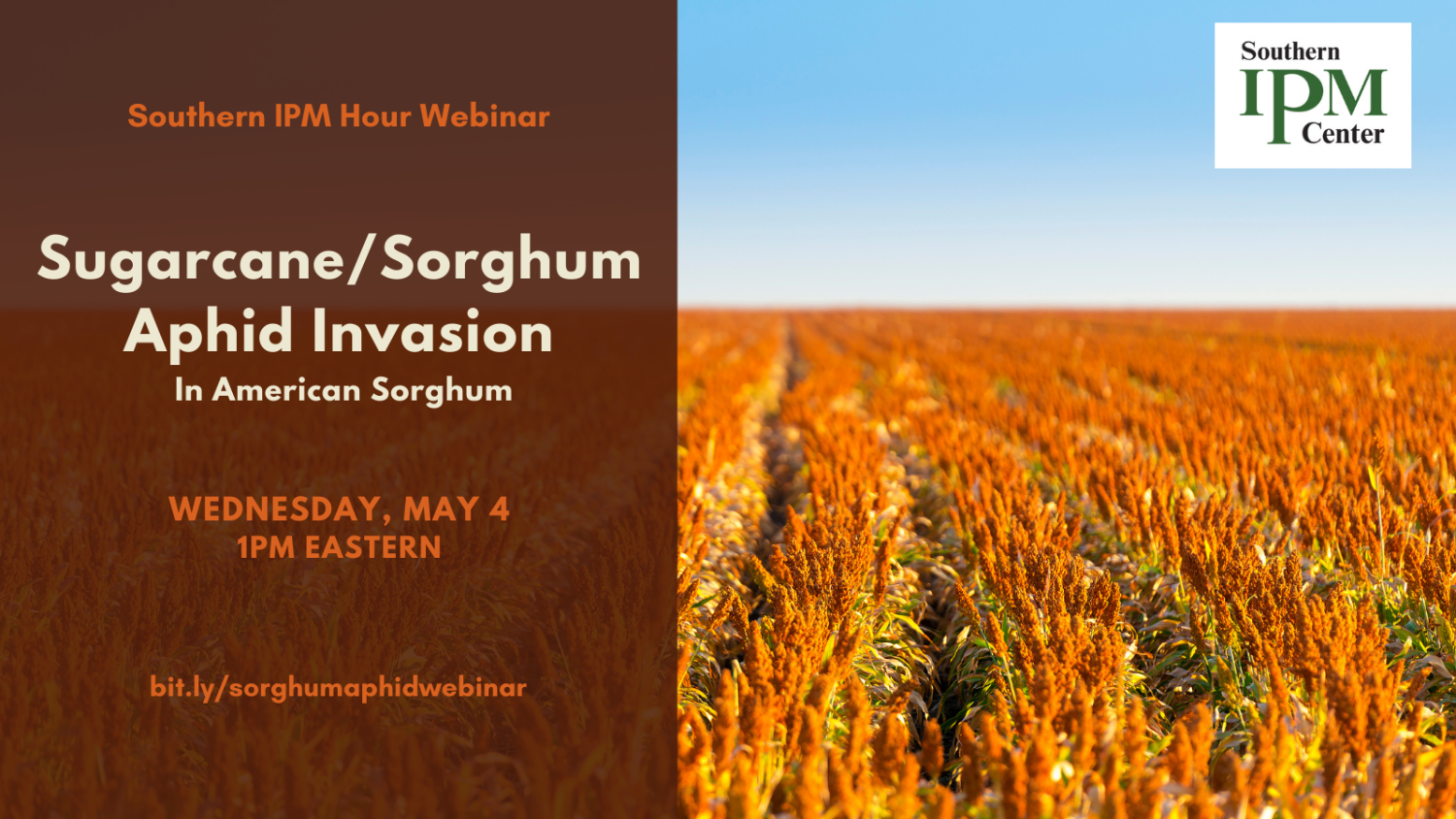
The Southern IPM Hour monthly webinar series presents research, issues, and programs in Integrated Pest Management from the Southern Region of the United States. The IPM Hour takes place on the first Wednesday of the month at 1pm Eastern.
Webinar Date: May 4, 2022, 1pm Eastern
Title: The Sugarcane/Sorghum aphid Invasion in American Sorghum: Updates and Future Directions
Speaker: Dr. Raul F. Medina
Registration: https://bit.ly/sorghumaphidwebinar
During 2013, grain sorghum crops experienced intense pest pressures from a new invasive aphid, that resulted in significant yield losses and economic impacts. Although this aphid was first thought to be the sugarcane aphid (Melanaphis sacchari), it was later identified as the sorghum aphid (Melanaphis sorghi), a cryptic species, that is genetically distinct from the sugarcane aphid. Differences in morphology, genetics, host-range, and microbial abundances among sugarcane and sorghum aphids informed this conclusion. When feeding, M. sorghi produces copious amounts of honeydew, which can affect sorghum production by clogging up farming equipment. Although the sorghum aphid is a polyphagous pest, in the US it is mostly found on grain sorghum and Johnson grass, a perennial weed distributed throughout sorghum growing regions.
Interestingly, there appears to be a lower abundance of sorghum aphid natural enemies on Johnson grass than on sorghum, even though the average number of aphids on both host plants does not significantly differ. This is important, because the uncultivated grass frequently occurs in proximity to sorghum and is a host for sorghum aphid several weeks before sorghum is available. Thus, if few natural enemies challenge this aphid in Johnson grass, aphid populations can grow rapidly, spilling over into sorghum and reaching levels above economic threshold. Considering that some predators and parasitoids consume aphid honeydew as a non-prey carbohydrate source, we explored whether honeydew sugar composition may explain differences in natural enemy abundance between Johnson grass and sorghum. As such, this study characterized honeydew sugar composition between sorghum aphids fed on grain sorghum and Johnson grass and the attractiveness of this honeydews to the aphid parasitoid Aphelinus nigritus.
—————————————————
Even if you cannot attend, if you would like to receive a direct link to the recording afterwards, please register so the link can be sent directly to your email.
Please share with all that might benefit.
More information at SouthernIPM.org